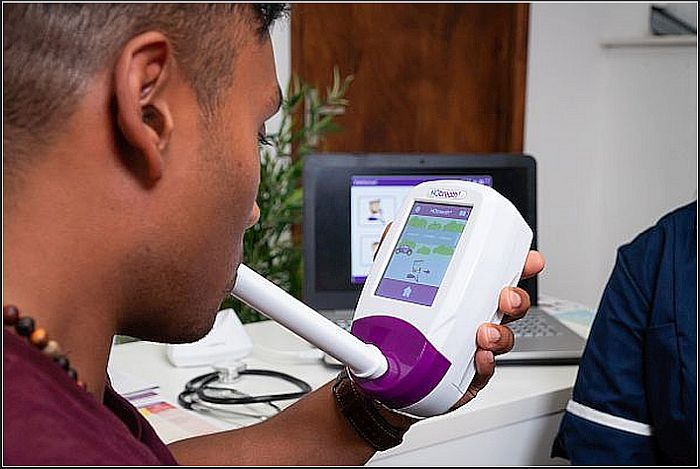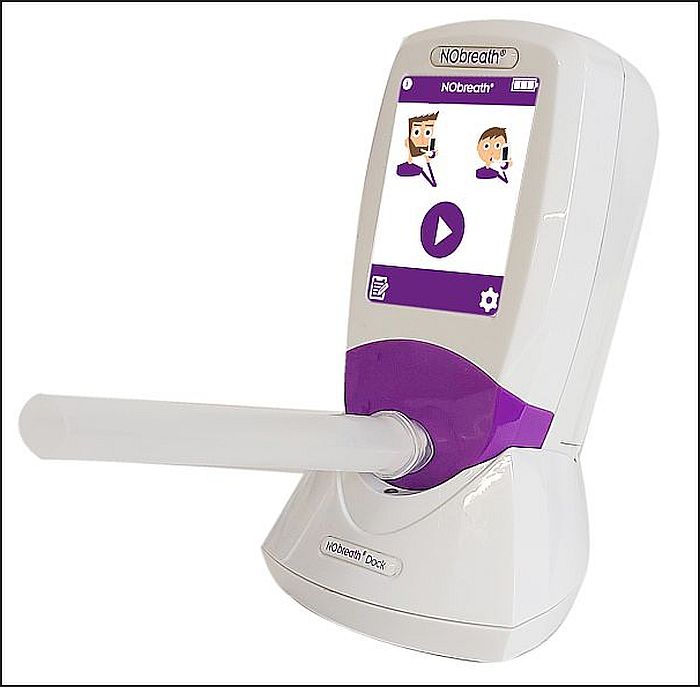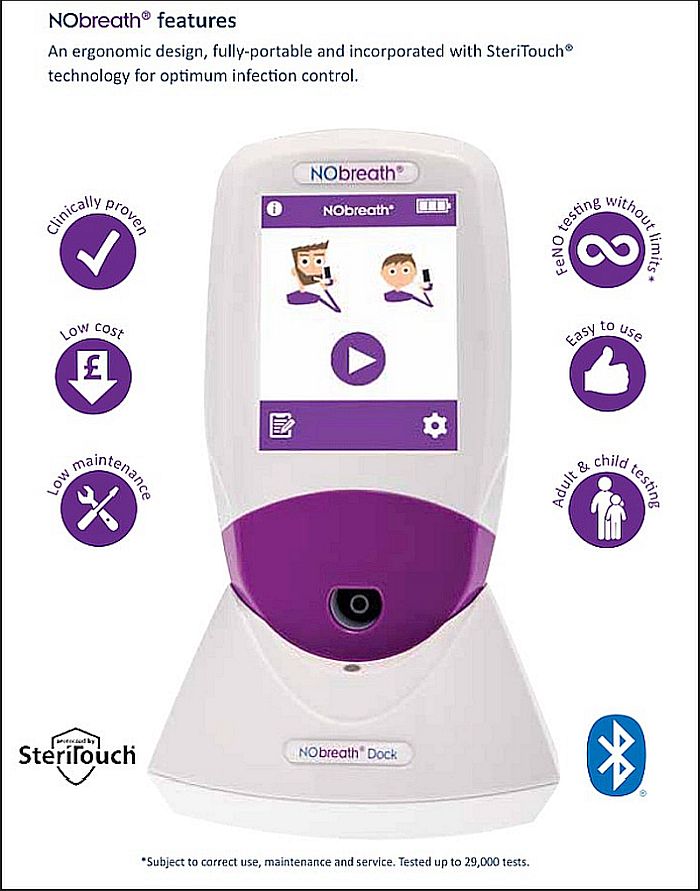Measure exhaled nitric oxide for airway inflammation with the
NObreath FeNO monitor

* Fractional Exhaled Nitric Oxide (FeNO) Fractional exhaled nitric oxide is a good marker for eosinophilic airway inflammation and is considered to be a good indicator of corticosteroid response (1).
* The production of nitric oxide is often found to be higher in inflammatory conditions such as asthma and therefore FeNO monitoring can be used for the detection and management of such conditions (2), but also to differentiate between COPD, ACOS and other interstitial lung diseases that are not assessed by other means, such as lung function (3).
* Nitric oxide measurement is not intended as a stand-alone method for diagnosis and should be used in conjunction with other evaluation methods and tests (4).
* Fractional exhaled nitric oxide measurement is a simple, rapid, highly reproducible, and non-invasive method of airway inflammation assessment, which until now, has been an expensive test to deliver in everyday practice (5).


References:
1. – Price D, Ryan D, Burden A, Von Ziegenweidt J, Gould S, Freeman D et al. Using fractional exhaled nitric oxide (FeNO) to diagnose steroid-responsive disease and guide asthma management in routine care. Clinical and Translational Allergy. 2013;3(1).
2. Saito J, Gibeon D, Macedo P, Menzies-Gow A, Bhavsar P, Chung K. Domiciliary diurnal variation of exhaled nitric oxide fraction for asthma control. 2017.
3. ATS/ERS Recommendations for Standardized Procedures for the Online and Offline Measurement of Exhaled Lower Respiratory Nitric Oxide and Nasal Nitric Oxide, 2005; American Journal of Respiratory and Critical Care Medicine; vol. 171: 912-930;2005
4. Correlation of Exhaled Nitric Oxide, Spirometry and Asthma Symptoms: Journal of Asthma: Vol 42, No 10 [Internet]. Tandfonline.com. 2017 [cited 15 March 2017]. Available from: http://www.tandfonline.com/doi
5. Chen F, Liao H, Huang X, Xie C. Importance of fractional exhaled nitric oxide in diagnosis of bronchiectasis accompanied with bronchial asthma. Journal of Thoracic Disease. 2016;8(5):992-999.
